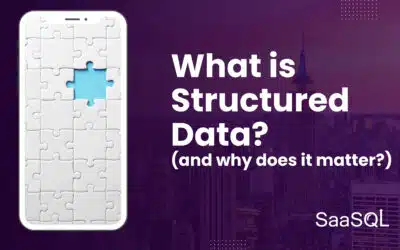Understanding Account Based Marketing (ABM):
Account based Marketing (ABM) is not just a marketing strategy; it’s a targeted, precision-focused approach that reshapes how businesses interact with their most coveted clients. In essence, ABM is about treating individual accounts as a market of its own. Unlike traditional marketing, which casts a wide net, ABM is akin to nurturing a carefully curated garden where every plant is tended to with care and attention. The philosophy behind ABM revolves around understanding the unique challenges, aspirations, and pain points of specific high-value accounts, tailoring marketing efforts to resonate deeply with their needs.

Account Based Marketing: Historical Context and Evolution:
- Origins: The origins of ABM can be traced back to the 1980s, where businesses, primarily in the B2B sector, started realizing the need for a more personalized approach. In those early days, ABM was a manual, relationship-driven process involving personalized interactions and exclusive events.
- Evolution: Fast forward to the digital era, and ABM has undergone a paradigm shift. The rise of big data, advanced analytics, and marketing technologies has transformed ABM into a data-driven, highly personalized strategy. Today, companies leverage artificial intelligence, machine learning, and predictive analytics to identify, engage, and convert high-value accounts.
Account Based Marketing: Technical Aspects of ABM:
- Account Selection: Modern ABM starts with meticulous account selection. Utilizing predictive analytics, companies can analyze vast datasets to identify accounts most likely to convert. By evaluating factors like historical buying behavior, industry trends, and firmographic data, businesses can create a targeted list of accounts ripe for engagement.
- Personalized Content: ABM hinges on content that speaks directly to the hearts of the target accounts. This isn’t merely personalization; it’s hyper-personalization. For instance, a software company targeting a high-value healthcare client might create content addressing specific healthcare challenges, compliance issues, and industry trends. This tailored content could range from industry reports and case studies to webinars and interactive tools.
- Multi-Channel Engagement: ABM leverages a multi-channel approach, weaving a seamless tapestry of interactions. Imagine a scenario where a prospect receives a personalized email, sees a relevant social media ad, attends an exclusive webinar, and receives a direct mail package – all conveying a consistent message. Each touchpoint deepens the engagement, nurturing the relationship.
- Data Analytics: The heart of ABM beats with data. Advanced analytics tools monitor customer behavior, track engagement metrics, and provide real-time insights. These insights aren’t just numbers; they are the compass guiding marketers, allowing them to refine strategies, pivot campaigns, and adapt in real-time based on the audience’s response.
Account Based Marketing: How ABM Differs from Traditional Marketing:
- Focus: Traditional marketing scatters its efforts across a wide audience, hoping to capture the attention of potential customers. ABM, on the other hand, zeroes in on a select few high-value accounts, investing time, energy, and resources to nurture these relationships.
- Personalization: While personalization in traditional marketing might mean addressing an email recipient by their first name, ABM digs deeper. It involves understanding the intricacies of an industry, comprehending specific pain points, and tailoring messages so precisely that they resonate with the individual challenges faced by the target accounts.
- Relationship Building: ABM is about building relationships that endure. It’s about becoming a trusted advisor, not just a vendor. Traditional marketing might lead to one-off transactions, but ABM lays the foundation for long-term partnerships, where both parties grow and evolve together.
Account Based Marketing: The Value of ABM:
- Increased ROI: One of the most significant advantages of ABM is its impressive return on investment. By focusing on accounts with a high likelihood of conversion, businesses optimize their resources. The cost per acquisition reduces, and the quality of acquired customers often results in higher revenue streams.
- Improved Customer Relationships: Successful ABM is a testament to the art of understanding. By delving deep into the world of the customer, businesses build relationships based on empathy, trust, and value. These relationships transcend transactions, leading to customer loyalty and advocacy.
- Better Alignment with Sales: ABM acts as the bridge that unites marketing and sales teams. Instead of a traditional handoff, ABM fosters collaboration. Marketing equips sales with valuable insights, enabling them to have informed, meaningful conversations with prospects. This alignment results in a cohesive, synchronized approach, amplifying the chances of conversion.
Account Based Marketing: Successful ABM Examples:
- Adobe: Adobe employed ABM to target enterprise clients for its Marketing Cloud solution. By tailoring content and engaging with personalized campaigns, Adobe saw a 60% increase in their average deal size and a 30% increase in close rates.
- Cisco: Cisco used ABM to engage with specific accounts in the healthcare sector. They created targeted content addressing the unique challenges faced by healthcare providers. The result? A 70% increase in deal size and a 40% increase in conversion rates.
- Terminus: As a company specializing in ABM solutions, Terminus practiced what they preached. They used their own platform to target specific accounts. The outcome was a 300% increase in engagement and a substantial rise in the conversion rate.
Account Based Marketing: Technologies Enabling ABM:
- Customer Relationship Management (CRM) Software: CRM systems like Salesforce and HubSpot act as the nucleus of ABM efforts. They store vital customer data, track interactions, and provide a comprehensive view of the customer journey.
- Marketing Automation Platforms: Tools like Marketo, Eloqua, and Pardot automate marketing processes, enabling personalized campaigns and lead nurturing. These platforms ensure consistency and precision across multiple channels.
- Predictive Analytics: Predictive analytics tools like 6sense and Demandbase leverage machine learning algorithms to analyze vast datasets. They identify patterns, predict customer behavior, and assist in account selection, ensuring that marketing efforts are directed toward the most promising prospects.
Account Based Marketing: Future Developments and Improvements:
- AI-Powered Personalization: Artificial intelligence will revolutionize personalization. Imagine AI algorithms analyzing real-time data, predicting customer needs, and dynamically generating content tailored to individual preferences. Cross Channel Marketing Solutions from SaaSQL are a good example of a strategy that combines data, technology and technique. This level of hyper-personalization will redefine customer experiences.
- Augmented Reality (AR) and Virtual Reality (VR): AR and VR technologies will create immersive, interactive experiences. Businesses can use AR/VR to showcase products, allowing potential clients to visualize solutions in their own environment. These technologies will be pivotal in engaging high-value accounts and demonstrating the tangible benefits of products and services.
- Blockchain for Data Security: As data privacy becomes paramount, blockchain technology will play a significant role in ensuring secure, transparent transactions. Blockchain can enhance trust between parties, especially in industries where sensitive information exchange is crucial, such as healthcare and finance.
Account Based Marketing: How to Implement ABM Effectively:
- Research and Account Selection: Invest time in in-depth research to identify high-value accounts. Utilize predictive analytics tools to analyze historical data and select accounts with a high probability of conversion. Evaluate factors like past interactions, industry relevance, and revenue potential.
- Content Creation: Craft content that resonates with the specific challenges and aspirations of the target accounts. Leverage storytelling techniques, case studies, and interactive content formats to convey the value proposition effectively. Remember, the goal is to address their pain points and provide viable solutions.
- Multi-Channel Engagement: Plan a multi-channel engagement strategy that ensures consistency across platforms. Whether it’s email marketing, social media, webinars, or direct mail, each channel should reinforce the same message. Personalize interactions and tailor the content to fit the channel’s context while maintaining a cohesive narrative.
- Measurement and Optimization: Implement robust analytics tools to measure the effectiveness of your ABM campaigns. Track engagement metrics, conversion rates, and customer feedback. Analyze the data to identify patterns, successes, and areas for improvement. Use these insights to refine your strategies, optimize campaigns, and adapt in real-time.
Account Based Marketing: Conclusion:
Account based Marketing is not just a marketing technique; it’s a holistic approach that transforms the way businesses connect with their most valuable clients. By embracing hyper-personalization, leveraging advanced technologies, and fostering enduring relationships, ABM empowers businesses to transcend transactional interactions and build partnerships based on trust and mutual growth. The success stories of companies like Adobe, Cisco, and Terminus serve as a testament to the power of ABM when executed with precision and empathy.
As we peer into the future, the integration of AI, AR, VR, and blockchain will redefine ABM, opening new avenues for immersive, secure, and personalized interactions. Implementing ABM effectively requires a blend of art and science, where data-driven insights inform creative storytelling, resulting in meaningful engagements that resonate with the hearts and minds of high-value accounts. In a world where customer relationships define the trajectory of businesses, ABM emerges not just as a strategy, but as a philosophy that celebrates the essence of human connections in the digital age.







